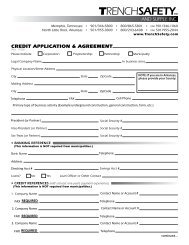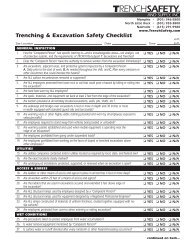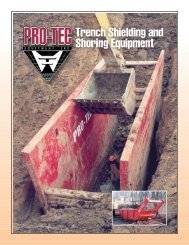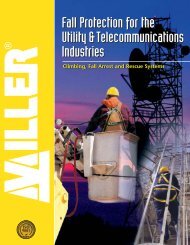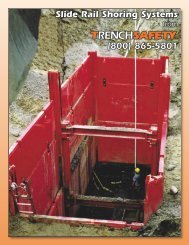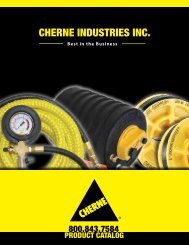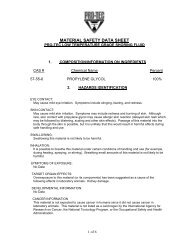Fall Protection Program Considerations - Trench Safety
Fall Protection Program Considerations - Trench Safety
Fall Protection Program Considerations - Trench Safety
- No tags were found...
You also want an ePaper? Increase the reach of your titles
YUMPU automatically turns print PDFs into web optimized ePapers that Google loves.
2345 & 6Lanyard Inspection (Continued)2) Wire Rope Lanyard – Whilerotating the wire rope lanyard, watch forcuts, frayed areas, or unusual wearingpatterns on the wire. Broken strands willseparate from the body of the lanyard.3) Web Lanyard – While bendingwebbing over a pipe or mandrel, observeeach side of the webbed lanyard. Thiswill reveal any cuts or breaks. Swelling,discoloration, cracks, and charring areobvious signs of chemical or heat damage.Observe closely for any breaks in stitching.4) Rope Lanyard – Rotate the ropelanyard while inspecting from end-to-endfor any fuzzy, worn, broken or cut fibers.Weakened areas from extreme loads willappear as a noticeable change in originaldiameter. The rope diameter should beuniform throughout, following a shortbreak-in period.5) Shock Absorber Pack – The outerportion of the pack should be examinedfor burn holes and tears. Stitching on areaswhere the pack is sewn to D-rings, belts, orlanyards should be examined for loosestrands, rips, and deterioration.6) Shock-Absorbing Lanyard –Shock-absorbing lanyards should beexamined as a web lanyard (described initem 3 above). However, also look for thewarning flag or signs of deployment. Ifthe flag has been activated, remove thisshock-absorbing lanyard from service.(Continued on page 16)15




